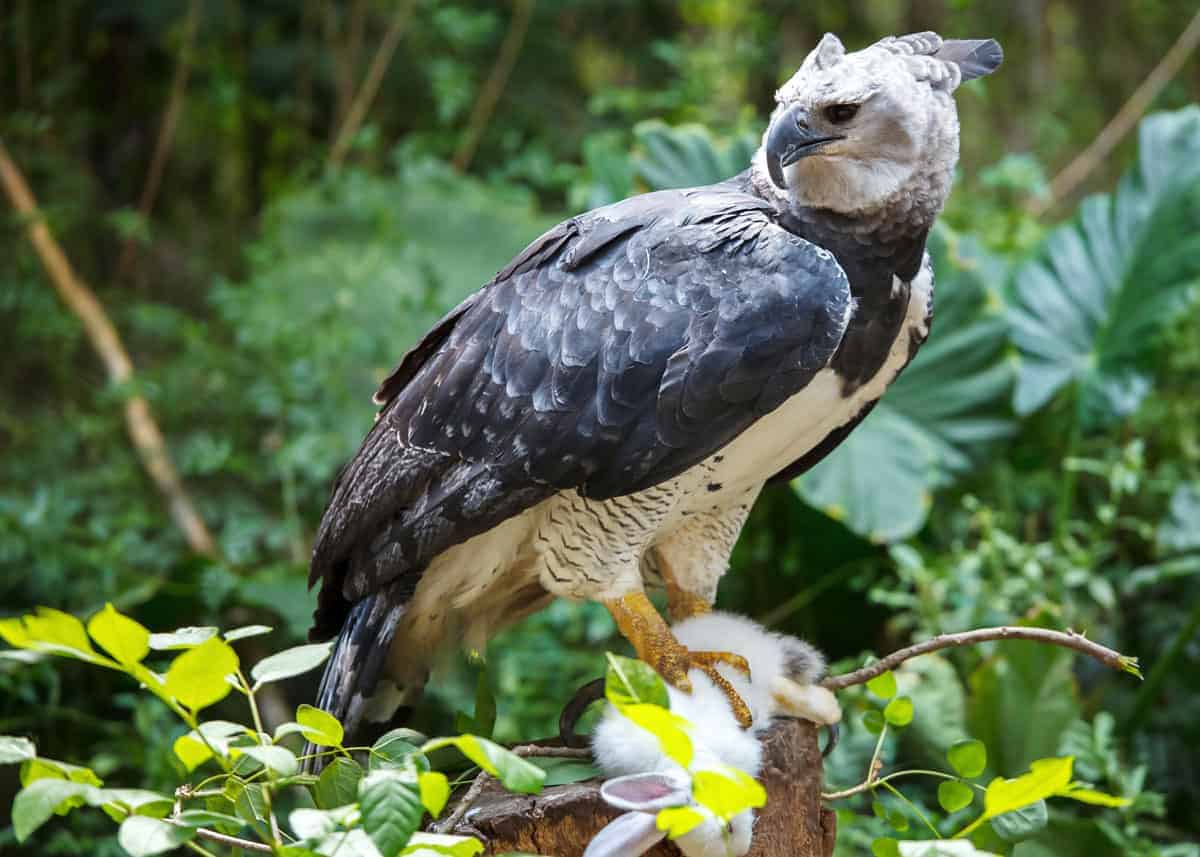
The crowned eagle, also known as the African crowned eagle or the crowned hawk-eagle (Stephanoaetus coronatus) is a large bird of prey found in sub-Saharan Africa; in Southern Africa it is restricted to eastern areas. Its preferred habitats are principally riparian woodlands and various forests. The crowned eagle is the only extant member of the genus Stephanoaetus. A second species, the Malagasy crowned eagle (Stephanoaetus mahery) became extinct after humans settled on Madagascar.
At least 90 per cent of the diet is mammalian; the usual prey taken by populations shows pronounced regional differences. Throughout its range the principal prey items are small ungulates (such as duikers, chevrotains), rock hyrax and small primates such as monkeys. Birds and large lizards are barely taken.
Although the crowned eagle’s long tail imparts an overall length up to 90 cm (35 in), it is somewhat less massive and has a considerably shorter wingspan than Africa’s largest eagle, the martial eagle (Polemaetus bellicosus). It is nevertheless considered Africa’s most powerful eagle when measured in terms of the weight of its prey items. It often preys on mammals such as bushbuck (Tragelaphus scriptus), exceptionally weighing up to 30 kg (66 lb) albeit usually much less. The crowned eagle possesses unusually large talons and strong legs, and may kill by crushing the skull. The eagle is also ferocious; some records from beneath a nest show the remains of a large, male Sooty mangabey weighing 11 kg (24 l b).
Due to their ecological similarities, the crowned eagle is Africa’s best analogue of the harpy eagle (Harpia harpyja). Thanks to its bold and highly conspicuous behavior, it is exceptionally well-studied for a large, forest-dwelling eagle. Due to a relatively high level of habitat adaptability, it was until recently considered to be faring well by the standards of large, forest-dependent raptors. However, today it is generally thought that it is decreasing far more than was previously perceived due to the almost epidemic destruction of native tropical African forest. It is now listed by the IUCN as Near Threatened.






